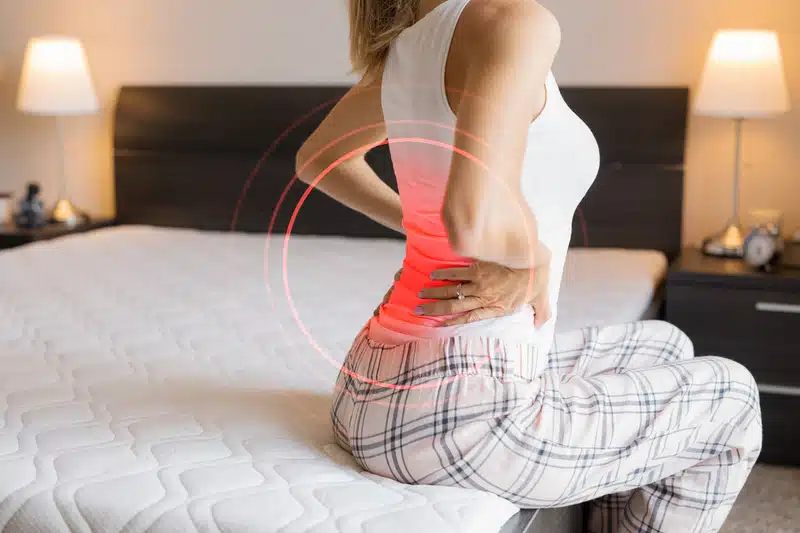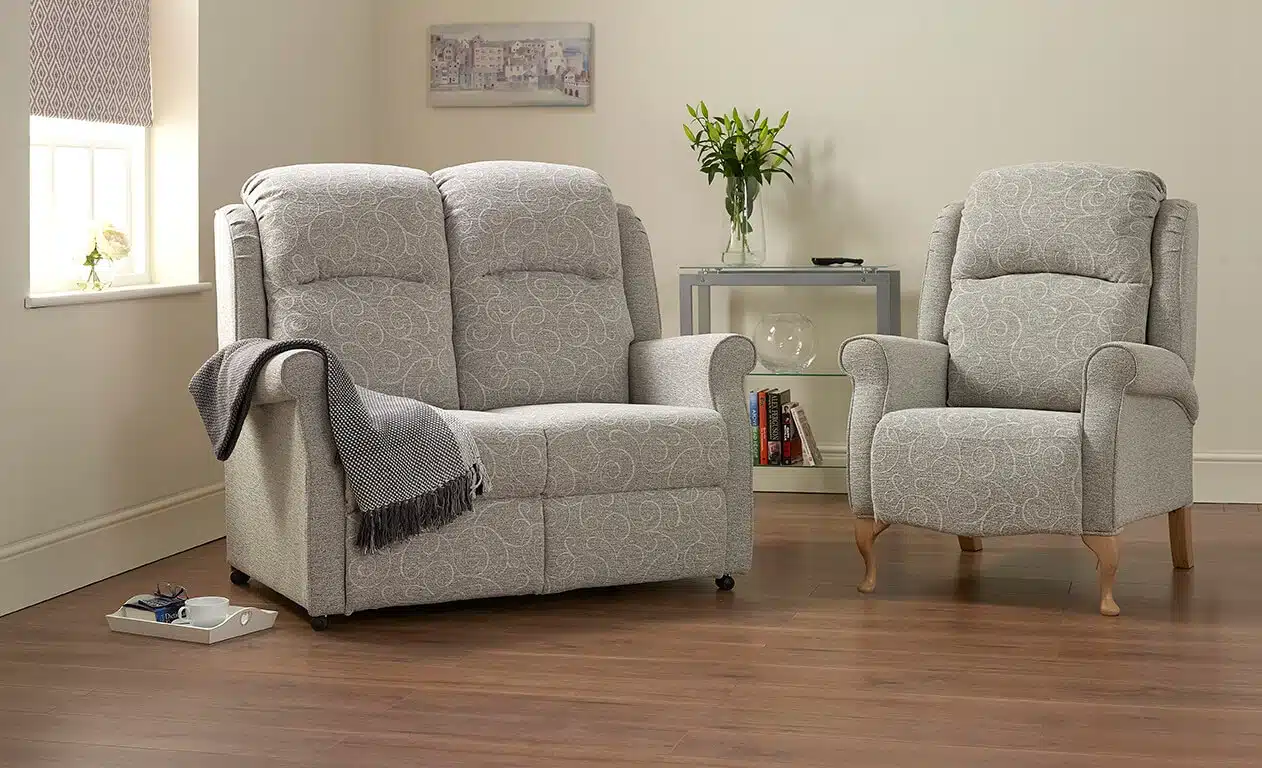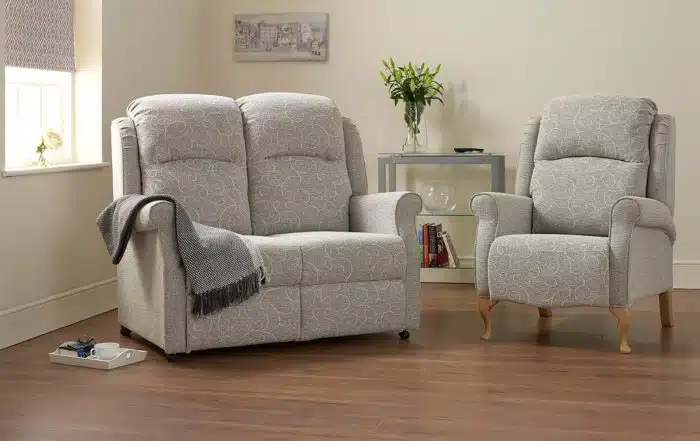The Best Beds and Mattresses for Back Pain
Social Links
When it comes to preserving our long-term health, there are few things more important than protecting our backs. After all, it has a lot of work to do – it holds us up, allows us to move around and protects our vital organs and delicate nervous system. And, unlike many other joints, it can’t be replaced if we wear it out.
Despite our best efforts, most of us will get a little back pain once in a while. For some, it never really goes away and for others, it can be so bad it prevents us from going about our lives as usual. And while no back pain, however severe, should go uninvestigated, there’s one item that all types of pain can benefit from… and that’s a high-quality bed (along with a supportive mattress)!
- Common Types of Back Pain
- Back Pain and Sleep
- The Best Bed for Back Pain
- Which Bed Mattress is Best for Back Pain?
Common Types of Back Pain
Given the complexity of parts that make up a human back, it’s perhaps not surprising that there’s so much that can go wrong with it. It comprises all the bones and cartilage in your spine, from the top of your neck down to your coccyx, your ribs, shoulder blades and all the muscles, ligaments and tendons holding them together. It also includes the nerves and spinal cord being protected by your spine, and the spongy discs in between each vertebrae that allow us to bend, twist and jump.
Pain can occur in any of these places and can range from a dull ache or general stiffness to a sharp twinge or constant spasms. Causes may include muscle strain from overexertion, an accident such as a fall, a slipped or herniated disc, bad posture, degenerative conditions, sciatica or pinched nerves which may refer to pain somewhere else, or overuse leading to repetitive strain injury.
Back pain that lasts for three months or more is categorised as chronic, and pain can be mild, moderate or severe. Mild pain may be nothing more than a temporary inconvenience, while severe pain is so debilitating that it prevents you from going about your life and doing everyday things.
Back Pain and Sleep
Having a decent bed and mattress shouldn’t be a luxury – it’s absolutely essential for overall health and wellbeing. Poor sleep can affect all areas of our lives, from our ability to work effectively to our relationships with others. The quality of our bed and mattress can determine whether we wake up feeling refreshed and energised, or tired, stiff and achy. When it comes to back pain, a good sleeping surface can help ease or even prevent it by holding us in the right postural position and allowing our bodies to heal while we sleep. On the other hand, a bed that’s saggy, lumpy, uneven or just too old, may not only aggravate back pain – it could even be the cause.
The ideal sleeping position is one in which our body weight is evenly distributed, especially around the joints, and the spine is supported in its natural ‘S’ shape. This allows blood to circulate around the body freely, delivering healing cells to any achy bones and muscles. An unsupportive bed or mattress may actually force us to unknowingly sleep in a twisted, hunched or other uncomfortable position, which pulls unevenly on our muscles and ligaments and restricts blood flow to those areas, leading to pain and stiffness when we wake up.
Without the healing and refreshing benefits of good sleep, you are also more likely to feel fatigued during the day. This can affect your concentration, memory and motor skills, which means you are more likely to have an accident, slump, hunch or otherwise use poor posture, or employ incorrect techniques for activities like lifting and bending. All of these issues can lead to injuries including muscle strains or slipped discs, which in turn will cause you to sleep badly, creating a negative cycle of poor sleep at night and fatigue and pain during the day. If this sounds familiar, there’s a good chance your bed or mattress (or both) needs replacing.
The Best Bed for Back Pain
The flip side of this, fortunately, is that a bed that’s supporting you properly can go a long way to alleviating or even preventing pain and other symptoms. What type of bed is best for back pain will depend on different factors such as your weight, preference and the type of pain you have. The best bed for lower back pain, for example, is one which allows you to sleep with your knees raised slightly, as it takes the pressure off the lower part of the spine. Being able to raise the head slightly can ease tension in a tight neck or shoulders.
In either of these cases, an electric adjustable bed can help you achieve this with the touch of a button, so you can find your ideal sleeping position without having to constantly readjust pillows. Plus, if pulling on levers and cranks would aggravate your back pain, an electrically adjustable bed such as the Hereford Double Bed allows you to adjust your position without even having to get out of bed!
If you’re thinking about getting an adjustable bed, consider getting tailored measurements so that your body will be supported in exactly the right position, with pivot points aligned with your head, hips and knees. Not only does this help promote circulation so you’ll feel more rested in the morning, but you’re less likely to be woken up in the night by discomfort or pain.
Which Bed Mattress is Best for Back Pain?
A good mattress goes hand in hand with having a high quality bed to improve your sleep and ease back pain. The right mattress for you will depend on personal preference and the type of back pain you have. For example, in the case of a slipped or herniated disc, a medium to firm mattress which supports good posture may be best. If you are very tall or heavy, a firm pocket-sprung mattress could provide the best support over a long period. On the other hand, if you are small, very light or a side sleeper then a softer mattress that cushions your joints and supports your hips might be the most comfortable.
If you suffer from joint issues, nerve pain or the cold, a memory foam mattress could be ideal for you. Its super-elastic high-density material supports even weight distribution to take pressure off joints, and its cocooning, heat-retaining qualities provide a soft, cushioning layer which keeps you warm and promotes circulation. If you have a partner who moves around a lot and aggravates your back pain, memory foam is also a good option as it has low motion transfer, meaning less disturbance and more continuous, quality sleep.
The Bottom Line
Not all back pain goes away on its own, so if you’re suffering it’s important to talk to your GP and determine if you need any medical treatment. In the meantime, upgrading your bed and mattress can go a long way to alleviating your symptoms, and breaking the cycle of bad sleep and a sore back.
To find your ideal bed and mattress combination, the best thing to do is to try them out – so ask the Mobility Furniture Company about booking a demonstration in the comfort of your own home. We’re here to help because we know that having a high-quality bed and mattress isn’t a luxury – it’s essential for looking after our precious one and only back!
*This website contains general medical information. The medical information is not advice and should not be treated as such. Read our full Medical Disclaimer here.


